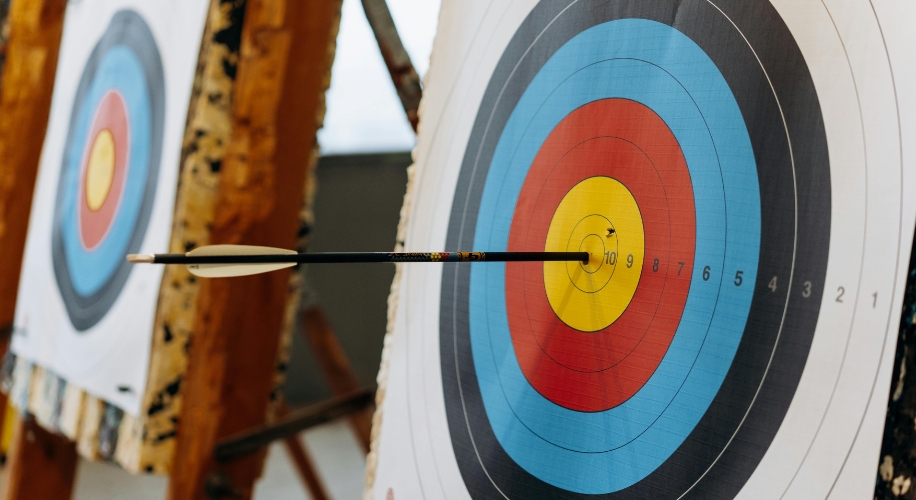Mastering Precision: The Role of Vision in Archery and Shooting
In the realm of Olympic sports where precision and accuracy are paramount, archery and shooting stand out as disciplines where vision plays a critical role. Unlike many other sports where speed and strength are essential, archery and shooting demand an unparalleled level of visual acuity and focus. Athletes in these fields rely heavily on their eyesight to achieve pinpoint accuracy, and understanding how vision impacts their performance can offer fascinating insights into their training and techniques.
Photo by Mikhail Nilov
The Science of Vision in Archery
Archery, whether traditional or modern, requires a blend of skill, technique, and visual acuity. The sport demands that archers have precise control over their aim, and vision is crucial to this control.
Depth Perception
One of the most critical aspects of archery is depth perception. Archers need to accurately judge the distance between themselves and the target. Depth perception allows them to gauge how much to adjust their aim based on the distance. Good depth perception helps archers align their sights and arrows correctly, ensuring that each shot lands precisely where intended.
Eye-Hand Coordination
Archers rely on exceptional eye-hand coordination to draw, aim, and release the arrow smoothly. This coordination ensures that the arrow follows a straight path towards the target. Training often involves exercises designed to enhance this coordination, helping archers to respond instinctively to visual cues and make split-second adjustments.
Focus and Targeting
Focus is another critical element. Archers must concentrate on their target while maintaining a steady and relaxed posture. The ability to focus on a small target at varying distances requires sharp visual acuity of the dominant eye. Archers often practice techniques to improve their ability to maintain focus, which directly translates into better shooting performance.
Photo by Mikhail Nilov
Vision in Shooting Sports
Shooting sports, including rifle shooting and pistol shooting, also depend heavily on the athlete’s vision. The precision required in these disciplines is akin to that in archery but often involves different visual demands.
Sighting and Scoping
In shooting sports, athletes use scopes or sights to align their shots. The clarity and sharpness of the sighting device are crucial for accurate shooting. Shooters need to have excellent visual acuity to align the sights with the target accurately. This process involves a combination of visual sharpness and the ability to maintain a steady sight picture.
Peripheral Vision
Peripheral vision plays a significant role in shooting sports, especially in disciplines like trap and skeet shooting where shooters need to be aware of their surroundings. The ability to spot and react to targets quickly while maintaining focus on a central target requires a well-developed peripheral vision. Shooters often train to enhance their peripheral awareness to improve their reaction times and overall performance.
Visual Acuity and Focus
Shooters require a high level of visual acuity to distinguish between fine details on the target and the background. Achieving precise focus on the target while maintaining clarity on the sighting device involves rigorous visual training. Some shooters incorporate vision exercises into their routine to enhance their ability to quickly shift focus and maintain clarity under varying conditions.
Photo by Tima Miroshnichenko
Training for Optimal Vision
Both archers and shooters can benefit from targeted vision training to enhance their performance.
- Visual Training Tools: Athletes may use tools like vision boards or specialized glasses to train their eyes for better precision and clarity. These tools help in simulating the conditions they will face in their sport, allowing for more effective training.
- Regular Eye Exams: Routine eye exams ensure that athletes maintain optimal visual health. Any changes in vision can be promptly addressed to avoid compromising performance.
In the Olympic sports of archery and shooting, vision is not merely a passive aspect but an active and integral component of performance. Athletes in these sports take eye safety seriously and invest significant time practicing to achieve the precision required to win these events.







 Canada
Canada